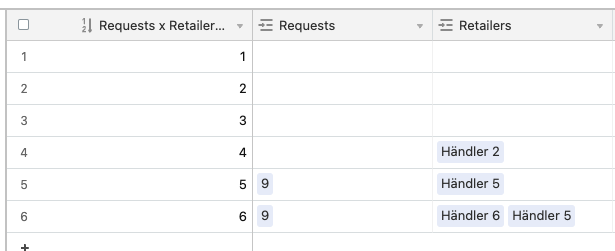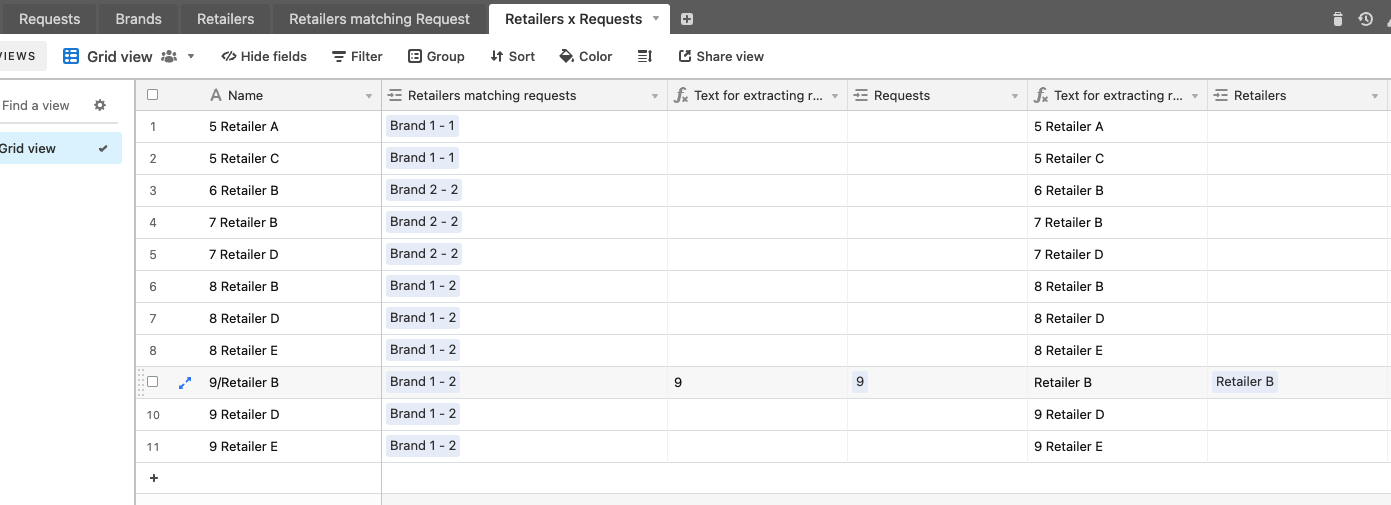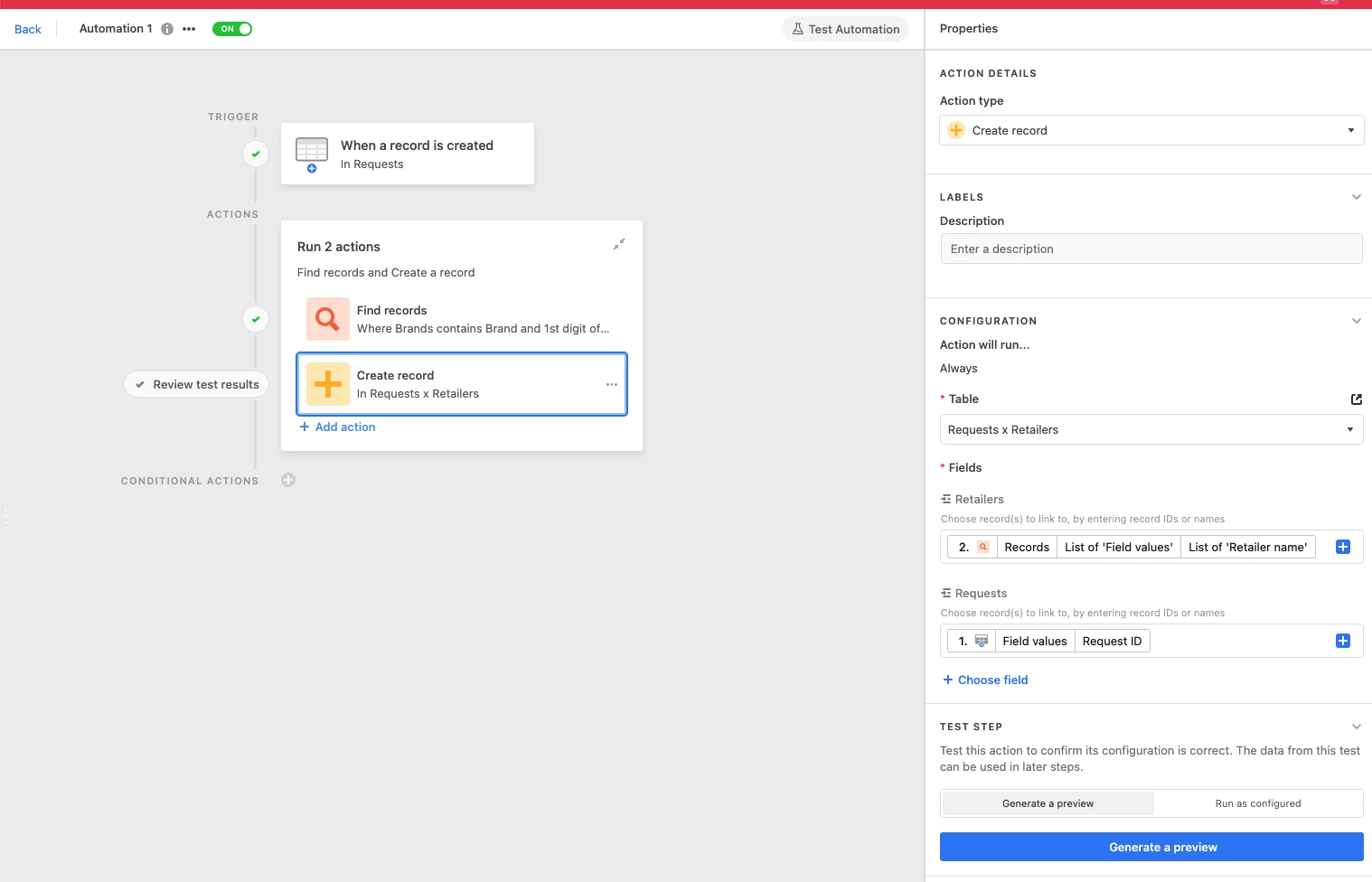Hi there,
I am looking for a way to create an automation that every time a new record has been created, finds records and then creates separate(!) new record for each match.
I am trying to match requests with retailers and there are usually several retailers that match a certain request. Therefore I would like to create another table that has a separate row for each match. So far I only manage to get a table with multiple records in the retailers columns (even though the field properties do not allow multiple matches).

Any ideas? Thank you! :slightly_smiling_face:








